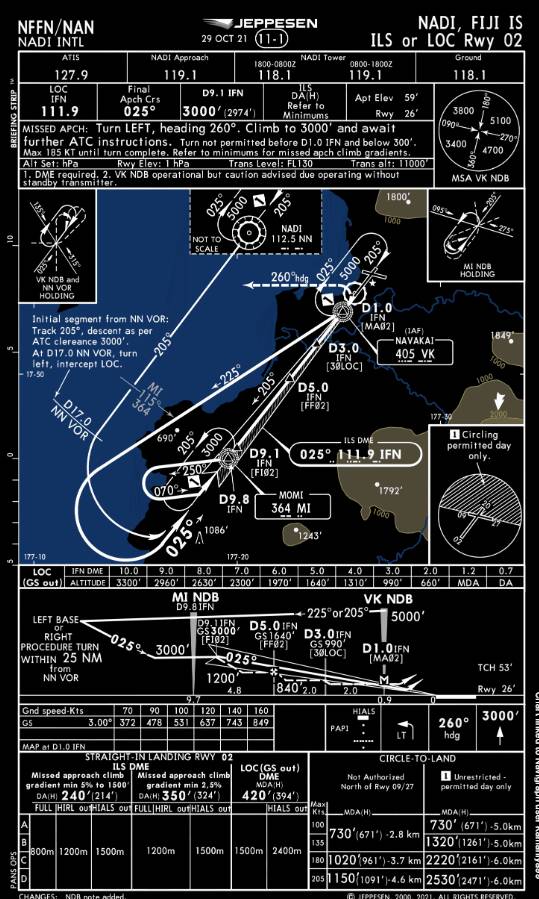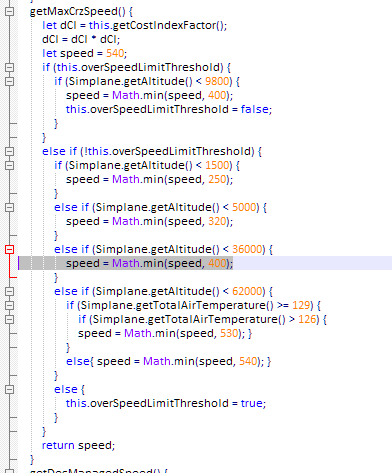I struggle to get VOR LOC to work myself.
Try swapping over to RAD → GLIDE, as soon as you are within range of the ILS localizer.
I struggle to get VOR LOC to work myself.
Try swapping over to RAD → GLIDE, as soon as you are within range of the ILS localizer.
After reading some of the recurring the posts above, I feel there’s a disconnect between what’s being experienced as a problem and the resolution offered.
I agree that VORLOC can be omitted for most basic ILS type approaches. And in those cases the GLIDE and LAND works well with a suitable intercept. So there’s no discussion needed on the ILS on the current Concorde AP.
The discussion needed in only on the standalone application of the VORLOC i.e. without the ILS.
There are multiple instances where use of VOR is required in SID or STAR. Examples are EGLL BPK7, LGAV KRO1L departures. Most Procedure Turns (PT) type of approaches need a lock onto the VOR radials.
I believe this is the issue that has been reported as being inconsistent in the Concorde AP. Sometimes it locks and at other times it doesn’t.
So maybe we could just concentrate on the VORLOC on such instances and not combine it with the ILS capture, which currently works fine.

I just tested the 1.0.3 version in the same circumstances as I’ve been testing 1.0.2 and I have to say that Localizer capture is much better. Glideslope capture still is not great as the plane is consistently low but not a showstopper. Without commenting on any of the Max Cruise or other changes, I would say 1.0.3 is a big improvement for me.
And yes I can still capture ILS with VOR LOC first and only pushing GLIDE when the glideslope needle starts moving.
One thing I do notice is that (at least for the airport I’m testing at) the ILS signal seems really short distance. I only get the ILS needle to register at about 20 miles from the airport. I seem to recall that the ILS should be picked up much further away.
So maybe this is the problem that people are having. You’re trying to switch to ILS too soon? Make sure you see the ILS signal (including the glideslope needle).
as defined in the code, the use of vorloc is tied to the radins switch being in the RAD position before pressing VORLOC, (what the switch in RAD does is basically disable GPS mode so you can reach the Localizer and that’s what I did in the video). could you do the following test? Switch on RAD, and activate VORLOC to capture the LOC. If the aircraft does not respond and continues straight, without deactivating VORLOC, do a change from RADINS to INS and back to RAD. If this works it means that for some reason the GPS is not being deactivated.
what you have just commented distinguishes two things during the ILS landing at MSFS. I press VORLOC when the LOC has CDI (course deviation information), which is when the horizontal deviation is detected. that usually happens before the detection of GSI (Glideslope information). At the moment that LOC has GSI, that is to say when the vertical needles of the ADI and HSI begin to move detecting the vertical deviation, it is when you press glide or Land
I have been checking the Overspeed warnings in the sound file.
The alarm warnings can trigger if the following conditions are met:
1.- Climbing to 5000ft: IAS higher than 335 IAS.
2.- Climbing to 36000ft: IAS Higher than 425 IAS.
3.- Climbing to 60000ft: IAS Higher than 552 IAS, or total ambient temperature higher than 130 Celsius (Check your Temps gauge in this case, if at 60000ft maintaining a 2.04 mach cruise temperatures get higher than 129 degrees the sound will trigger. MAX Cruise is set to apply 530 IAS in order to reduce Temperatures).
When using max cruise, if Total ambient Temperature gets higher than 127 degrees means the Ambient Temperature is higher than normal to maintain a mach 2.04 cruise. A workaround would be disable max cruise and engaging MACH HOLD (Left button), and set a lower mach speed that helps the TAT being within the normal limits, other workaround would be disabling Autothrottle and going full throttle without AB. An ISA degree below 0 is more optimum for Concorde to cruise at 2.04.
Ok so that’s the annoying alarm I am getting, where I love speeeed at all altitudes it becomes annoying at times. Wonders if the real plane have something like a master warning switch where we can silent that off and focus on dealing with the problem?
IRL if you are exceeding max speed you better slow down immediately or you will disintegrate. Either way, you won’t have to hear the alarm very long.
As I recall, DC Designs said that the barber pole will be added eventually so you will be able to prevent the alarm from going off in the first place.
Getting ready to start my next RTW flight in Concorde, this time a bit more thorough than my last, visiting every country I could find with 8000+ft runways, for 200 legs total. Excel helped me calculate the shortest total route distance. The longest leg is 2761nm and the shortest just 20nm (touch and goes for short ones like this) and highest elevation is 8466ft but has a 13996ft runway.
All questionable runway lengths at higher altitudes have been pre-tested for Concorde achievability for the fuel load required for the next leg and some had to be substituted because they weren’t possible (eg. I couldn’t even lift off at SLLP, at 13212ft elevation, before running out of runway even with fuel load of only 15 tonnes and runway length of 13126ft), but marginal ones have been kept in for the extra challenge.
Anyway, this should keep me busy for the next couple of months 
I had that happen to me. I had to reduce the cabin pressure to fix it. Engineer panel, upper left side.
I was able to do a quick flight with version 1.0.3 to test it out. I had a flight plan that transitioned to an ILS landing. I was in INS the whole flight, descended to the approach in preparation to land, saw the VOR needle was active, switched to HDG HOLD and flipped the switch to RAD. Once the ILS showed on the CDI I pushed the VOR LOC button and it acquired the Localizer with no issue. HDG HOLD automatically deactivated. So I have to disagree with you.
This second limit caused me issue on my current flight. As I was climbing on MAX CLIMB through 32000ft, the aircraft leveled off by itself and accelerated from 400 to over 500kts thus triggering the overspeed aural warning. When it hit 500 knots it recommenced climbing and when I cleared 36000ft the aural warning stopped. ISA was +2C and fuel load was about 35T at the time if that makes any difference.
Should the autopilot be behaving like this or is the overspeed warning triggering unnecessarily?
I have the IVAO .pdf for the “Concorde World Tour 2017” but I couldn’t find if I’m allowed to post documents and such here on this forum. It’s been very useful in my round the world flights with the Concorde, it even has the planning for the “Supersonic loop”.
It’s weird the aircraft started to accelerate to 540IAS below 36000ft. Max climb works with managed speeds same as MAX CRUISE, and the managed airspeed orders are very clear in the code…

Although it is possible that max climb exceeded 400 IAS and that is why the alarm was set at 425. It was to give the autopilot a margin.
Precisely when you reach 36000ft the plane levels off to gain those 540IAS and continue climbing.
Max Climb is based on FLC, the plane concentrates on building and maintain the managed airspeed before establishing the vertical speed, but just as there are PID values for the GlideSlope, for NAV, etc, they also exist for FLC and maybe that is why it is exceeding the speed and not correcting the error in time. It could be adjusted.
Thanks for checking the code on this. It definitely happened like I said as my ears are still ringing from the 2 minutes of overspeed warning tone  I’ll see if it does it again on future flights and will take a screenie if the AP punches through 400kts below 36K on MAX CLIMB again.
I’ll see if it does it again on future flights and will take a screenie if the AP punches through 400kts below 36K on MAX CLIMB again.
Ah, just had a thought. Later in this flight I realised I hadn’t hit B to go to 29.92 above 18000ft and there was a jump in altitude of a couple of thousand feet when I did. Perhaps I thought I was going through 32000ft due to incorrect altimeter setting but was perhaps really at 36000ft when MAX climb decided to level off to accelerate. If so, then my bad and I’ll try to be a better pilot in future. 
I was going to comment on it too, but such a mismatch in the barometer seemed exaggerated. Could be.
Right, as dean/code name jack in previous posts mentioned that the overstress damage was modelled in so I expected that to be safe even if overspending😅 no idea of the structural limit of concorde IRL
Awesome video.
There is different text on some switches with mouse-over. Some show the current status, some show the function where they can be switched to. This is quiet confusing because some switches don’t have a label.
Example: Autothrottle is on, the switch on the head-over has status on, mouse-over shows “autothrottle switch off”, to which you can switch.
Engine rating switch is climb, is at label climb, mouse over shows “Engine 1 rating switch climb”, which is the current status.